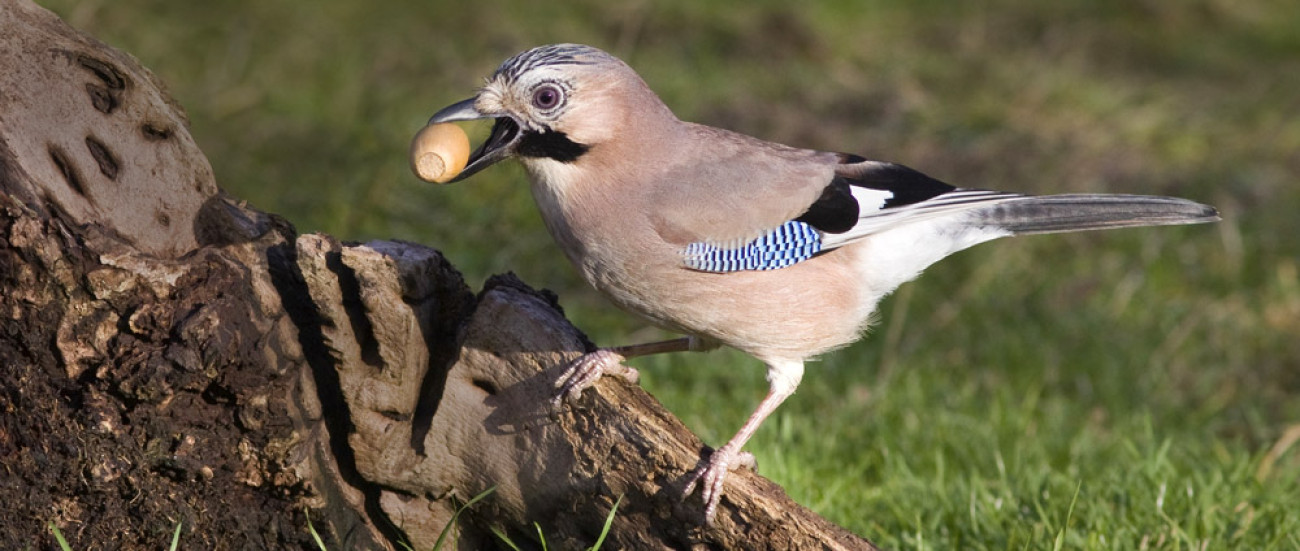Saving for a rainy day
Caching, as this behaviour is known, is a strategy that is typically employed during autumn. Individuals may expend considerable time and effort amassing these reserves, which may prove a lifeline over winter, so remembering hiding places and stopping ‘thieves’ is very important.

Hide and seek
Caching is not a rigid behaviour but one that may change depending on social context. In general, individuals become much more cautious when storing food if they think that they are being watched. Grey Squirrels, for instance, travel further and are much more vigilant when burying their food if they think they are being observed. They are known to turn their backs on potential on-looking squirrels and to create ‘dummy caches’, where nothing is actually stored. For Grey Squirrels, food type also influences caching behaviour, with individuals more likely to stop digging if they think they are being watched while burying a preferred food rather than a less preferred one. They can also be remarkably canny, eating acorns that will perish quickly, while storing those that have a longer shelf-life.
A typical tactic for reducing the number of caches that are stolen is to scatter them widely. Coal Tits, which can be seen storing food gathered from garden feeding stations and other sources during autumn, find a variety of hidey-holes for their caches, helping to reduce the thieving efficiency of species such as Great Tits. Coal Tits prefer certain hiding places over others – the inner parts of trees being safer than the outer parts, for instance – and will travel further to use such places. Despite having many different stores, Coal Tits appear to be quite good at remembering where these are. An aviary experiment showed that they can remember where they have stored their food for up to four weeks. In contrast, Grey Squirrels can rediscover many of their stores for at least a couple of months, using their memory and sense of smell.
Unlike Coal Tits, Nuthatches defend territories throughout autumn and winter. This territoriality serves to protect their caches, with pilfering rates tending to be low (perhaps less than around 5%). Like Grey Squirrels, Nuthatches also safeguard their stores by being cagier if a potential thief is present. Under such circumstances, they store less and eat more food, thereby increasing their internal (fat deposit) reserves rather than their external (cache) ones. A member of BTO staff once found a stash of peanuts in her pillowcase; on further investigation she found that the culprit was Nuthatch. It was taking peanuts from her feeder in the garden and caching them in her pillowcase!

Jays can store acorns several kilometres from where they are gathered, although most are buried (with some placed in tree crevices) within a few hundred metres. Up to 75% of these caches may later be retrieved, although a figure of just 30% has also been reported – it seems that some Jays are better at remembering their hiding places than others. Research shows that Jays find taller (over 20 cm high) landmarks particularly useful when rediscovering their stores. Such landmarks are less likely to get covered in snow or leaf fall, or to be obscured by vegetation.






Share this page